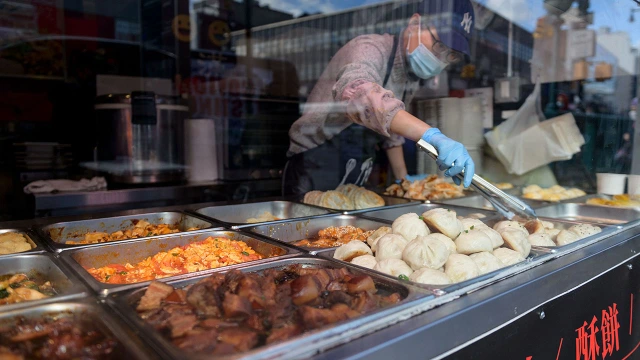With 12% of all restaurants Asian restaurants as a whole dominate despite Asian Americans being only 7% of the population — the subgroups that fall under it have drastically different levels of representation
PRAVASISAMWAD.Com
The Pew Research Center in a recent study has found that there are fewer Indian and Filipino restaurants than Chinese and Japanese when compared to their respective population sizes in the US.
While Asian restaurants as a whole dominate much of the country’s food scene — amounting to 12% of all restaurants despite Asian Americans being only 7% of the population — the subgroups that fall under it have drastically different levels of representation, reported nbcnews.com.
Chinese restaurants are the most common type of Asian restaurant, that according to experts was unsurprising. In fact, 39% of all Asian restaurants in the country were Chinese restaurants, outranking Japanese and Thai, which follow at 28% and 11%, respectively.
Comparatively, cuisines like Indian and Filipino comprise just 7% and 1% of all Asian restaurants, despite collectively making up nearly 40% of the Asian population.
There are reasons for this, and they’re tangled up in immigration patterns, colonialism and income status. “I think what unites these two cases is higher education and the capacity to speak English,” said Krishnendu Ray, an associate professor of Food Studies at New York University. “If you speak English and have a college degree, you do not get into the restaurant business. The restaurant business is a very tight business, a very labour-intensive business. It’s mostly sweat capital.”
Patterns of immigration from India and the Philippines have created two of the most college-educated, English-proficient groups under the AAPI umbrella. While new immigrants might be drawn to the restaurant business, their first-generation children historically are not, Ray said.
“Though immigration might increase the demand for them over time, Indian and Filipino cuisines are a long way from ingraining themselves in the same way as Chinese and Japanese have, Ray said. “These military, touristic, colonial relationships play out in different ways.”
— Krishnendu Ray, Associate Professor of Food Studies at New York University
There’s also a difference between the ethnic cuisine being marketed to consumers — and who is actually doing the cooking. “Depending on the city, depending on the place, what we call Indian food is largely cooked by Bangladeshis,” Ray said. “There are many more Japanese restaurants in the United States, but most Japanese restaurants in the United States are not run by Japanese chefs … most Japanese-style food in the U.S. today is produced by Koreans and Chinese and the Latinx population.”
But on the demand side, Indian food is simply not as popular, he said. In the American restaurant scene, Italian, Chinese and Mexican dominate. Every state in the US has a Chinese restaurant, the study said, a result of Chinese migration east from California in the 19th and 20th centuries.
“Chinese restaurants in the U.S. are as old as restaurants in the U.S.,” Ray said. “If you do something long enough, you become a specialist … Until you get into the 1980s with Japanese, no other Asian food compares.”
“The presence of Japanese food, the strength of Thai food, and the emerging presence of Korean food is linked to the political, economic and cultural entanglement that is not there in the Indian case,” Ray said. Other colonial powers have different culinary scenes — also informed by their unique histories. In Britain, for example, Indian food dominates. “Indian food in the U.K. is like Italian food in America,” he said. “Everyone does a bit of it; if you get drunk you want the curry and the beer.”
Though immigration might increase the demand for them over time, Indian and Filipino cuisines are a long way from ingraining themselves in the same way as Chinese and Japanese have, Ray said. “These military, touristic, colonial relationships play out in different ways,” he noted.
*********************************************************
Readers
These are extraordinary times. All of us have to rely on high-impact, trustworthy journalism. And this is especially true of the Indian Diaspora. Members of the Indian community overseas cannot be fed with inaccurate news.
Pravasi Samwad is a venture that has no shareholders. It is the result of an impassioned initiative of a handful of Indian journalists spread around the world. We have taken the small step forward with the pledge to provide news with accuracy, free from political and commercial influence. Our aim is to keep you, our readers, informed about developments at ‘home’ and across the world that affect you.
Please help us to keep our journalism independent and free.
In these difficult times, to run a news website requires finances. While every contribution, big or small, will makes a difference, we request our readers to put us in touch with advertisers worldwide. It will be a great help.
For more information: pravasisamwad00@gmail.com








